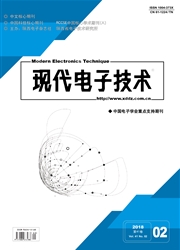

 中文摘要:
中文摘要:
目前我国各区域机场群内各机场功能定位趋同化严重,严重的同向定位导致各机场之间恶性竞争,尤其是地理位置相距较近的机场。为了改善区域机场群的结构,建立了机场群的超效率DEA模型、Logit模型和聚类分析组合分类模型,并以珠三角机场群为例,使用LINGO,SPSS等软件对模型进行编程分析与求解,对各机场进行梯度区分定位,结果表明:从不同角度评估模型,得到了相似的结论,进一步验证了综合分类评价的有效性。评价结果为香港〉广州〉深圳〉澳门〉珠海;并最终将香港和广州机场定位为国际性枢纽、深圳为区域枢纽、香港和澳门为干线机场。在评估的基础上,提出相应的协同发展策略,实现各机场之间协同发展,避免不必要的航线网络竞争,同时能够减轻空中交通管理的巨大压力,进一步促进航空运输的良性发展。
 英文摘要:
英文摘要:
In order to improve the structure of regional airport group, the super-efficiency DEA model, Logit model, and cluster analysis combination and classification model based on airport group were established. Taking the airport group of Pearl River Delta Area as an example, the models are performed with programming analysis and solving with LINGO, SPSS and other softwares. The gradient classification and positioning for each airport were carried out. The results show that the various evaluation for models can obtain the similar conclusion to verify the effectiveness of the comprehensive classification and evaluation. The evaluation result shows that the airport sorting levels from high to low are Hongkong, Guangzhou, Shenzhen, Macao, Zhuhai. Hongkong and Guangzhou airports are regarded as the international hubs, Shenzhen is regarded as a regional hub, and Hongkong and Macao are regarded as the trunk line airports. On the basis of assessment, a corresponding coordinated development strategy is put forward to realize the coordinated development among the airports, avoid the unnecessary airline network competition, mitigate the huge pressure of air traffic management, and promote the healthy development of air transport.
 同期刊论文项目
同期刊论文项目
 同项目期刊论文
同项目期刊论文
 期刊信息
期刊信息
